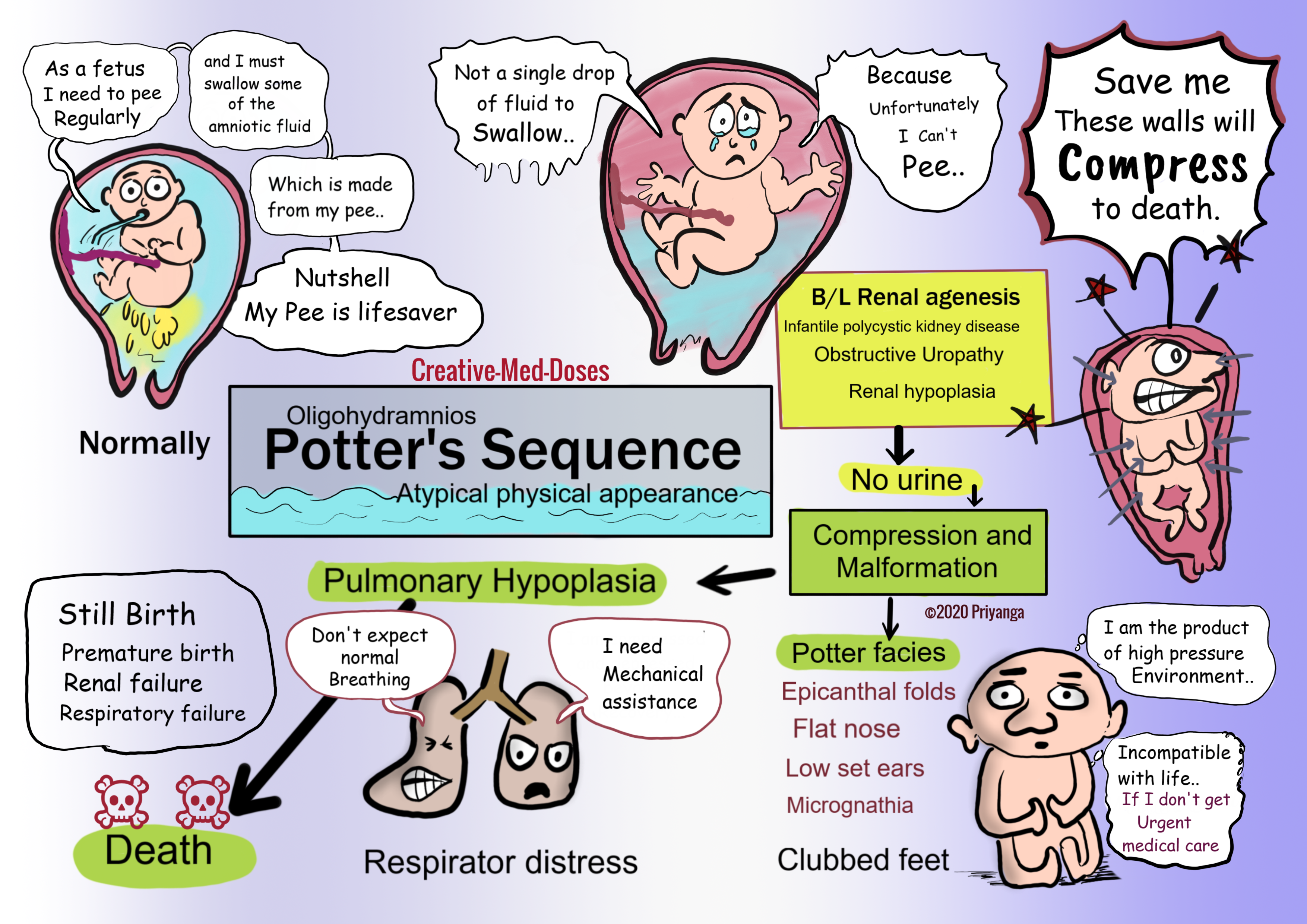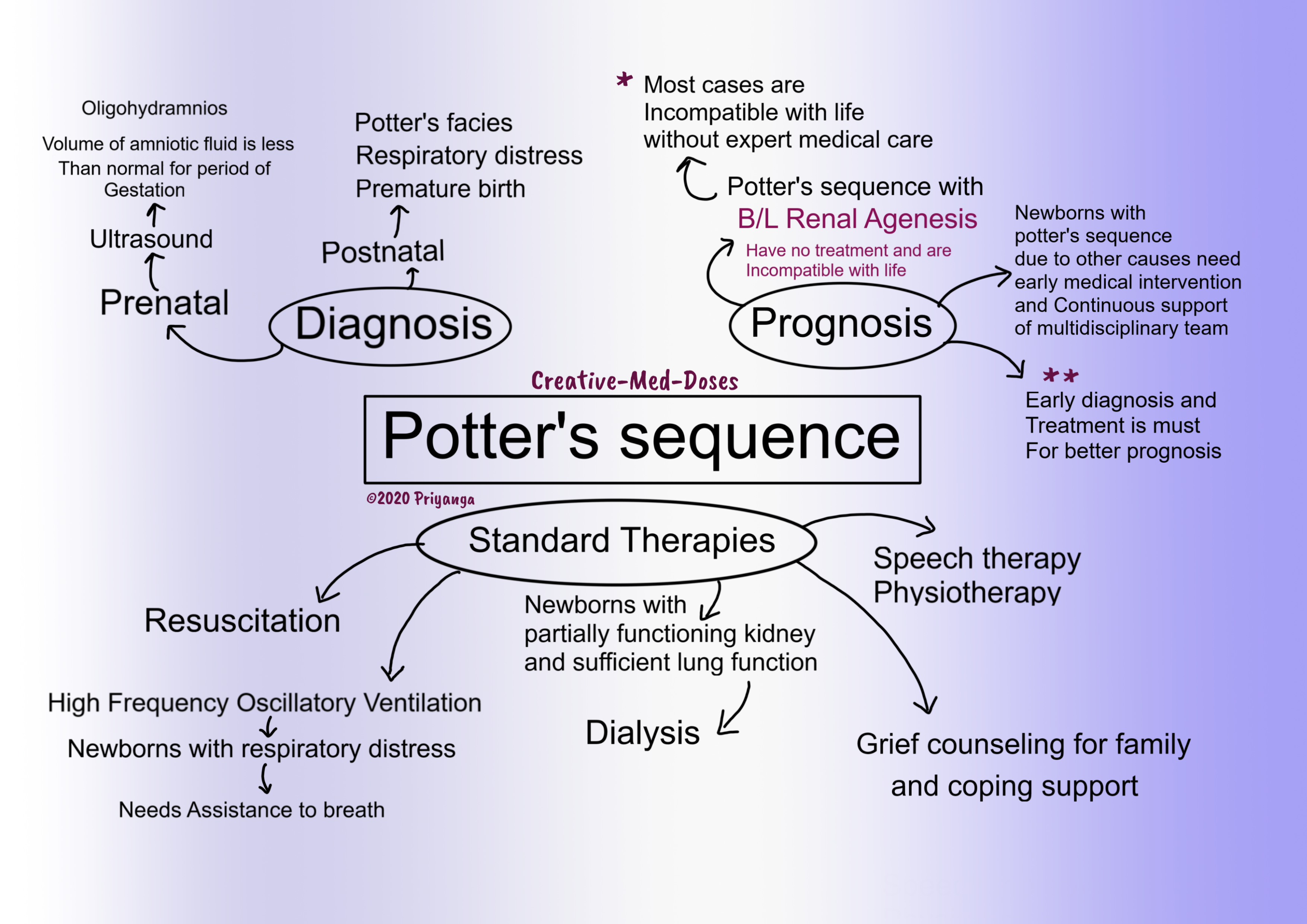Potter’s Sequence
Potter's sequence is the atypical physical appearance of a baby due to oligohydramnios and intrauterine compression.
Oligohydramnios means reduced amniotic fluid volume, which is sufficient to cause deformations due to pressure caused by the uterine wall.
Potter's sequence is associated with conditions causing oligohydramnios, such as bilateral renal agenesis, infantile polycystic kidney disease, renal hypoplasia, and obstructive uropathy. A decrease in the volume of amniotic fluid is due to decreased urine production.
Pathogenesis
Fetal urine production begins in early gestation and it comprises the majority of the amniotic fluid. The fetus continuously swallows amniotic fluid, which is reabsorbed by the gastrointestinal tract and then reintroduced into the amniotic cavity by the kidneys via urination.
Oligohydramnios occurs when the volume of amniotic fluid is less than normal for the corresponding period of gestation.
Fetal urine has a critical role in lung development. The swallowed amniotic fluid causes expansion of the alveoli, employing hydrodynamic pressure, this stretching causes growth of pulmonary tissue. The amniotic fluid also provides proline which is essential for lung development.
The absence of pulmonary stretch stimuli and proline leads to pulmonary hypoplasia, which causes respiratory distress and death.
The amniotic fluid serves as a shock absorber and cushion for the fetus. In oligohydramnios, the fetus gets compressed by uterine walls as it grows.
Clinical Presentation
- Potter facies-flattened nose, recessed chin, prominent epicanthic folds, micrognathia, receding chin, and low set of abnormal ears.
- Limb deformities – club feet, bow legs
- Sirenomelia – fused legs (mermaid's legs)
- Respiratory distress soon after birth
- Stillbirth or IUD (intrauterine death)
- Prognosis is very poor due to pulmonary hypoplasia in most cases with Potter’s sequence die in utero or just after birth.
...

...

...
Revision for today https://creativemeddoses.com/topics-list/renal-artery-stenosis-and-secondary-hypertension/
Follow us on Facebook https://www.facebook.com/creativemeddoses
Buy fun review books here (these are kindle eBooks you can download kindle on any digital device and log in with Amazon accounts to read them). Have fun and please leave a review. https://creativemeddoses.com/books/
A newborn develops respiratory distress. He is noted to have epicanthal folds, low-set ears that are pressed against his head, widely set eyes, a broad, flat, beak-like nose, clubbed fleet, and a receding chin. His skin is wrinkly and twisted. What is the most likely underlying cause of his condition?
A. Trisomy 13
B. Bilateral renal agenesis
C. Turner syndrome
D. Polycystic kidney disease